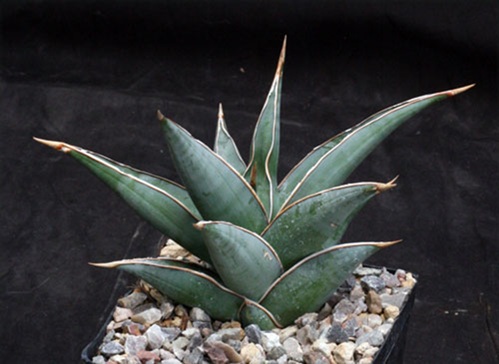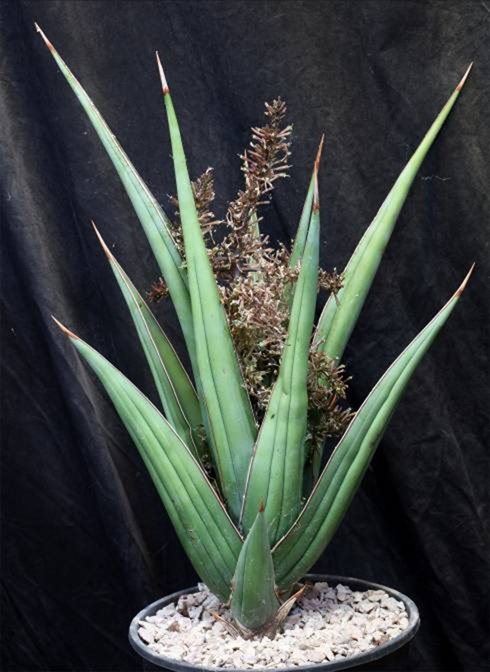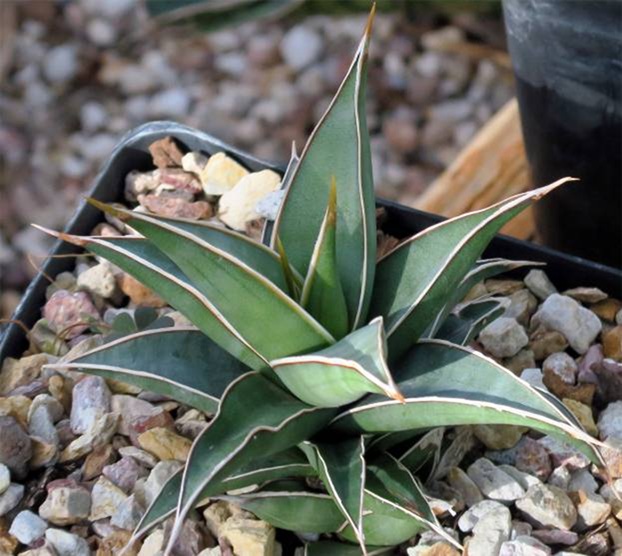| Protologue: |
Candollea 19: 145 (1964). |
| Etymology: |
The epithet refers to the thickened, stubby leaves of this species. |
| |
Sansevieria pinguicula P.R.O. Bally subsp. pinguicula fa. disticha (Pfennig ex Butler) L.E. Newton & Thiede |
| Protologue: |
Sansevieria 28: 17 (2012). |
| New combination: |
Cactus and Succulent Journal (US) 87(1): 31 (2015). |
| Etymology: |
The forma epithet refers to the arrangement of leaves in one plane. |
| |
Sansevieria pinguicula P.R.O. Bally subsp. nana (Chahinian) L.E. Newton & Thiede |
| Protologue: |
Sansevieria 30: 15 (2012). |
| New Combination: |
Cactus and Succulent Journal (Los Angeles) 87(1): 31 (2015). |
| Etymology: |
The subspecies epithet refers to the small size of the rosettes. |
| Subgenus: |
Paniculatus |
| Group: |
Sansevieria powellii |
| Distribution: |
Northeastern Kenya and likely in southeastern Somalia. |
| Brief Description of the Typical Species: |
This could be considered a short, caulescent, and stoloniferous species, but typically it does not reveal a stem below the leaves apart from the stolons. Instead, it has 5 - 7 compact, rosulate leaves that are slightly rough and have a deep channel on the upper surface; in addition, 2 - 7 narrow grooves occur on the lower surface. The leaves are generally 5-7 cm long and 2.8-3.5 cm thick, although larger forms exist in cultivation. The leaves are green or (more commonly) gray-green in color and narrow to a sharp tip with a brown leaf margin. The inflorescence is 15-32 cm tall and paniculate with 4 - 6 flowers per cluster. |
| Brief Description of Subspecies nana: |
Subspecies nana is smaller in size and has darker green leaves. |
| Brief Description of Forma disticha: |
This form has upwardly curving distichous leaves. |
| Similar Species: |
Sansevieria pinguicula does not resemble any other species in genus except perhaps Sansevieria powysii and S. powellii when those species are quite young. It would be difficult to confuse the typical forms of this species with any other in the genus despite the large amount of variability in color and form that it encompasses. |
| |
| |

The typical form of Sansevieria pinguicula (Lavranos & Newton 12240), propagated from material originally collected northeast of Garissa, Kenya, near the border with Somalia.
|
| |

A large form of Sansevieria pinguicula flowering in cultivation.
|
| |

Sansevieria pinguicula subsp. nana in cultivation.
|

